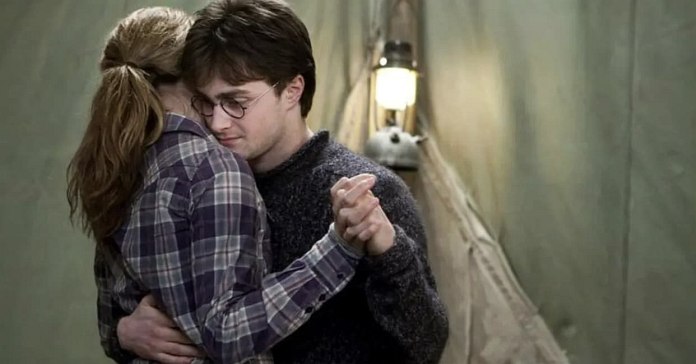
Adaptations are like artistic remixes of the source material. Just like a DJ taking a song and adding their own unique twist, when books are transformed into movies or TV shows, they become something new and exciting. These adaptations hardly ever stick to the script, and that’s what makes them so fascinating. It’s like a game of hide-and-seek with the original story, where alterations and surprises are sprinkled throughout. Of course, die-hard fans of the original material may feel a little uneasy with these changes. But hey, sometimes these adaptations actually manage to surpass the source material, like a magic trick that leaves you in awe. It’s like finding a hidden treasure among a sea of doubters. These rare gems prove that adaptations can be a rollercoaster ride of unexpected delights.
1. The Sewer Scene In ‘It’

The 1990 miniseries adaptation of Stephen King’s It closely followed the original source material, unlike the more recent theatrical films from 2017 and 2019. However, there was one scene that couldn’t have been included in the television event, even if the filmmakers had wanted to. This scene, known as the “sewer scene,” is also absent from the R-rated movies.
In Stephen King’s novel, this infamous scene appears near the end and involves Beverly engaging in intimate acts with each of the six boys from the Loser’s Club, all of whom are still pre-teens. King explains that the scene is more symbolic than sexual, representing the transition from childhood to adulthood. However, there are multiple reasons why this scene is not included in adaptations, including its heavy-handed symbolism and the fact that it is essentially un-filmmable.
The audience can already understand the significance of defeating Pennywise as a farewell to childhood without the need for this scene. Including it would only be redundant and unnecessary. Furthermore, the scene diminishes Beverly’s role in the group, portraying her more as a caregiver and conquest rather than the strong, resourceful character she truly is.
To sum it up, the miniseries adaptation remains more faithful to the source material, but wisely omits the controversial sewer scene. Its symbolism is heavy-handed and unnecessary, and it reduces Beverly’s character to a mere object rather than the strong and capable member of the Loser’s Club that she is.
2. Grandma Is Actually Nice In ‘Princess Diaries’

Many people might be surprised to learn that the Princess Diaries movies are actually based on books. While the films still focus on the royal Princess of Genovia and a girl from San Francisco, Mia Thermopolis, there are some noticeable differences between the novels and the on-screen adaptations. One major difference lies in the character of the grandmother. In the movies, Julie Andrews portrays a loving and supportive Grandma who balances her role as a poised monarch. However, in the books, Grand-mère is depicted as much more unpleasant. She is mean, touchy, and shallow. The relationship between grandmother and granddaughter is strained and superficial throughout most of the series, with little bonding until later on, and even then, it remains superficial. Julie Andrews’ portrayal of the caring grandmother deviates from the original vision of author Meg Cabot. Nevertheless, it was a refreshing change to see Anne Hathaway and Julie Andrews portray characters who had a positive relationship and supported each other, rather than constantly battling, as depicted in the books. -Ramya Jaishankar
3. Uncle Fester Becomes Gomez’s Brother In The ’90s ‘Addams Family’

The 1991 Addams Family movie holds a special place in the hearts of millennials. It is a film that many of us associate with our childhood, especially those of us with a gothic inclination. We fondly remember all the beloved characters like Gomez, Morticia, Wednesday, Pugsley, Thing, and of course, Uncle Fester. But here’s the thing, was Uncle Fester always Gomez’s brother? Well, not quite. In the original 1960s television show and the cartoon series by Charles Addams, Uncle Fester was actually Morticia’s uncle. However, the 90s franchise made a seemingly small change that turned out to be crucial for its success.
The first Addams Family film centers around Gomez’s quest to find his long-lost brother. The tension in the story stems from their strained relationship and Gomez’s desperate search for him. When “Gordon” shows up, believing he is impersonating Fester to steal the family fortune, the plot thickens. Yes, it may seem a little convoluted, but at the core of it all is the reconnection between Gomez and Fester. This is what drives the entire movie and sets the stage for a sequel that delves into Fester’s pursuit of love.
Without Fester being Gomez’s brother, the movie simply wouldn’t work. Fester would be just another side character, like Grandmama or Cousin Itt. The essence of The Addams Family has always been about their tight-knit unit against the world, and the bond between Gomez and Fester epitomizes this. Fester belongs in this family, and the brothers belong together.
– Anthony Barstow
4. The Martian’ Gets A Bit More Of An Ending
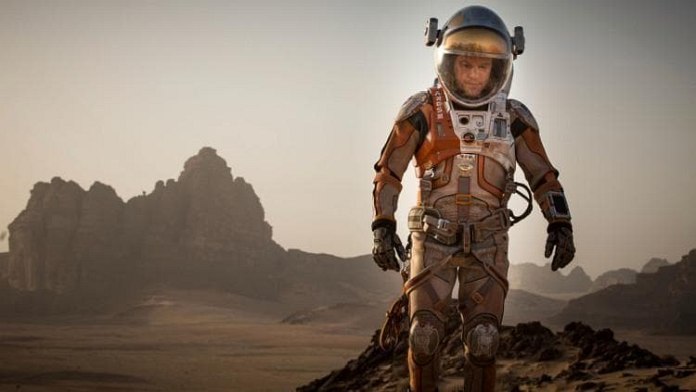
The Martian makes some great choices in adapting Andy Weir’s bestseller. It stays true to the book’s commitment to scientific accuracy and its clever, sarcastic sense of humor, without overwhelming those just looking for a fun time. The film also does a better job with its supporting characters, leading to a satisfying ending that surpasses the book’s conclusion in many ways.
In the novel, stranded astronaut Mark Watney successfully makes it from Mars to the Hermes spacecraft, which is supposed to bring him and the rest of the crew back home safely. The film takes inspiration from Weir’s original serialized e-book by showing Watney back on Earth. He gives a lecture to aspiring astronauts and takes a moment to appreciate the small miracle of a plant growing by a park bench. It’s a nice touch that brings the adventure full circle.
What’s even better, The Martian delivers a mega-happy ending. During the end credits, each supporting character gets a moment of pure satisfaction while “Love Train” by The O’Jays plays, leaving the audience walking out of the theater with a spring in their step.
-Tucker DeSaulnier
5. Harry And Hermione Dance In ‘Harry Potter and the Deathly Hallows Part 1’
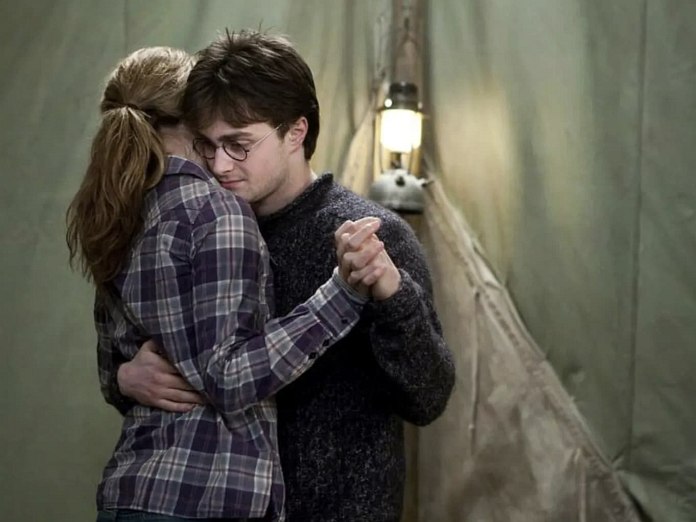
The song says it all so they don’t have to: O children… Lift up your voice… Rejoice.
After Ron leaves the flailing quest to find Horcruxes in Harry Potter and the Deathly Hallows, Harry and Hermione are devastated. Both in the book and the film, stranded in their tent pitched on barren landscapes, they have trouble speaking. Hermione cries. Harry doesn’t know how to comfort her, or himself. In the book, everything gets darker. But in the film, they dance, to Nick Cave and the Bad Seeds’ song ‘O Children.’
Without a word of dialogue, the scene conveys the depth of their friendship, both with each other and the missing Ron, and the beauty of the way song, dance, and companionship can bring light and joy in darkness.
Some fans cringe at this scene because it seems to imply a romantic relationship between Harry and Hermione.
But for all the relationship speculation that goes on in the Harry Potter series, the most important bond of all is the friendship between Harry, Ron, and Hermione. With one-third of the trio missing, they are all lost.
In this short but deeply moving scene, Harry wants to console Hermione, make her laugh, let her be free of the weighty Horcrux, and give them both a brief moment to simply be happy.
As director David Yates explained in a behind-the-scenes interview:
‘We wanted to do a scene without words that kind of caught that relationship. There’s just something really tender and funny and moving about seeing them trying to alleviate the pain, really, by dancing.’
Harry and Hermione are 17, but very much adults.
Hey little train, wait for me
Was held in chains but now I’m free
They are no longer on the safe train to Hogwarts, but are still friends, and that’s what matters.
-Karen Lindell
6. The Ending Of ‘The Mist’
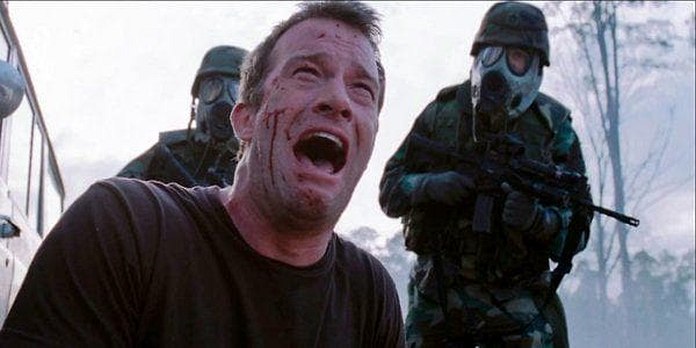
Stephen King is known for his brutal endings in equally brutal books, but few can compare to the way the adaptation of The Mist wraps up. In the movie, after managing to escape the supermarket in a repaired car, David, his son, and a few friends drive as far as they can through the Mist until their vehicle breaks down. Faced with the terrifying creatures lurking in the Mist, the adults make the heartbreaking decision that suicide is a better option than being torn apart. David, using his last four bullets, kills his own son and friends. He then steps out of the car, ready to accept his own death by the hands of the monsters, only to be greeted by the arrival of the army, who inform him that he has been rescued.
This ending is far more brutal than what Stephen King originally wrote in the short story, but it fits perfectly within the world established by the movie. It’s an ending that leaves a lasting impact, one that you won’t soon forget. The first time you experience The Mist’s ending, it will undoubtedly hit you right in the gut.
-Jacob Bryant
7. Bill And Frank’s Relationship In ‘The Last Of Us’
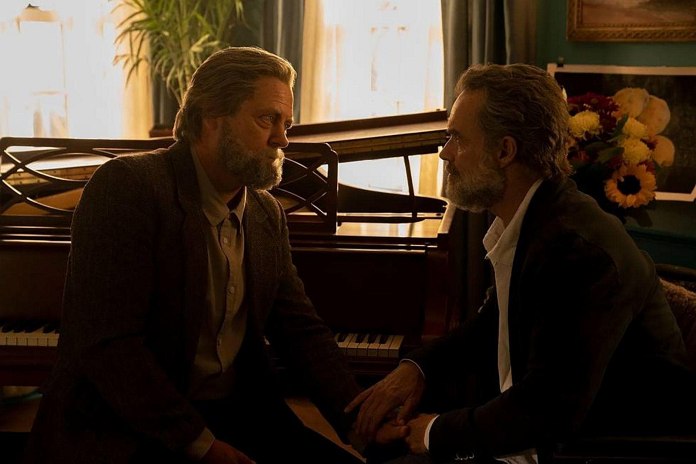
Episode three of HBO’s The Last of Us, titled “Long, Long Time,” took a bold step away from the video game’s storyline. Surprisingly, this departure resulted in the show’s most powerful episode yet.
The episode focuses on Bill, a grumpy doomsday prepper who has turned an abandoned town into his personal stronghold. However, his isolated existence is disrupted when one of his traps accidentally captures Frank, a refugee from a nearby quarantine zone.
Despite initially resisting Frank’s presence, Bill is won over by his charm and the two form a tender bond. As they navigate the dangers of their world together, they discover the importance of love and protection, even in the face of potential loss. Tragically, their time together eventually comes to an end, but they face it united.
Given the tendency of many shows to depict violent and tragic endings for LGBTQ characters, it would have been simple for The Last of Us to follow suit. However, the show defies this pattern and provides a rare, much-needed happy ending. This positive outcome serves as a valuable lesson, one that Joel will struggle to learn throughout the series.
The original video game offers no glimpse into Bill and Frank’s life together, suggesting that Frank left Bill in anger and ultimately took his own life. The show’s divergence from this bleak portrayal allows for a beautiful standalone story of love and resilience, something that the game’s Bill sadly never experienced.
-Linda Meyers
8. The Body Count In ‘Doctor Sleep’ Is Much Higher

Doctor Sleep, on paper, seems like a challenging book to adapt. After all, Stanley Kubrick’s The Shining is considered a masterpiece in the horror genre and a remarkable achievement in filmmaking. However, Stephen King, the author of Doctor Sleep, is not a fan of Kubrick’s version. In fact, the sequel deliberately distances itself from the 1980 film. While the book still contains its fair share of horror, it also offers a warmer and more redemptive tone compared to its predecessor.
In an unusual twist for adaptations, Doctor Sleep intensifies the consequences of the characters’ actions. Throughout the movie, characters who survive in the book are abruptly and unceremoniously killed. At first, this may come as a surprise, but as the story progresses, it becomes evident that these changes are not merely for raising the stakes. They serve a grander purpose, bridging the gap between King’s original novel and Kubrick’s distinct interpretation. Discussing the details without spoiling both the book and the movie is challenging, but I highly recommend the three-hour director’s cut of Doctor Sleep for those who are willing to listen. Rest assured, the movie packs a more devastating punch than the book, and there is a good reason behind it.
Moreover, the movie has garnered praise from none other than Stephen King himself. In an interview with Entertainment Weekly, he expressed his satisfaction with the script, stating that it successfully redeems all the aspects he disliked about Kubrick’s version of The Shining.
In conclusion, Doctor Sleep manages to navigate the challenging task of adapting a beloved horror classic while remaining true to Stephen King’s vision. It offers a unique blend of horror, warmth, and redemption that sets it apart from its predecessor.
9. 12 Monkeys’ Becomes About So Much More Than Stopping A Plague

Terry Gilliam’s 12 Monkeys film is widely regarded as a fantastic time-travel story. However, the Syfy series adaptation of 12 Monkeys has taken the story to new heights and solidified its place as one of the greatest time-travel tales in all forms of media. While the movie focuses on sending a man back in time to prevent a devastating global pandemic, the TV series goes beyond that and evolves into something even more captivating.
In the series, the plague is just one piece of the puzzle. The villains in the show are driven by a desire to create a perpetual present, where people can live in blissful moments without the burden of painful pasts or uncertain futures. It’s an enticing concept, but our heroes fight to preserve the entirety of time, both its good and bad aspects.
Despite its modest budget and relatively small viewership, 12 Monkeys deserves recognition alongside the heavyweights of “Best TV Writing.” Trust me, do yourself a favor and explore the vastly more intriguing version of 12 Monkeys.
-Jacob Bryant
10. The Ending Of ‘Little Women’

Many readers are drawn to Jo, the determined and spirited protagonist of Louisa May Alcott’s beloved novel, Little Women. Jo is the March sister with the most successful creative career and engages in a prolonged love story with Laurie, her neighbor. It is disheartening when Jo rejects Laurie’s proposal and instead chooses a life of independence as an author. The fact that her younger sister Amy ends up marrying Laurie adds to the disappointment. Jo eventually settles down with Friedrich Bhaer, an older professor, which frustrates many fans who see him as an unsatisfying love interest. It is also puzzling why Jo, who insists on remaining unmarried, suddenly decides to get married at all.
In Greta Gerwig’s 2019 film adaptation of Little Women, significant changes are made to the original story. By incorporating past and present timelines, Gerwig introduces Bhaer earlier and emphasizes his support for Jo’s writing. This version of Bhaer is younger and more emotionally connected, making him a more likely contender for Jo’s heart. The ambiguity surrounding the romantic scene between Jo and Bhaer, where they share a passionate kiss under an umbrella, suggests that Jo is adding it to her own version of Little Women at the request of her publisher. The true ending of the movie shows Jo observing her novel being printed and bound.
Gerwig explains that she wanted to honor Alcott’s own desires by presenting this ending. Alcott, like Jo, never married or had children, but she felt compelled to make her protagonist marry and have children in order to sell the book. Gerwig’s intention was to provide an ending that Alcott herself might have liked, allowing fans to decide which version resonates more with them – whether Jo should pursue her ambitions alone or find a supportive partner who champions her dreams.
-Sarah Hatheway